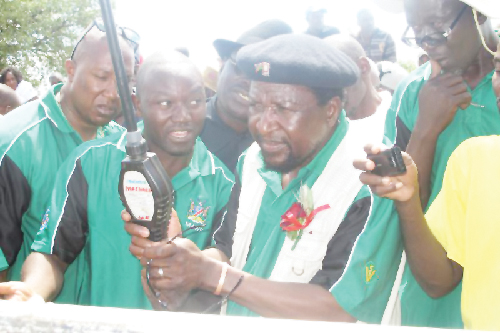
Namlits eartags go above red line
 The Ministry of Agriculture, Water and Forestry in partnership with the Millennium Challenge Account, launched the second phase of the Namibia Livestock Identification (Namlits) system in the Northern Communal Areas.
The Ministry of Agriculture, Water and Forestry in partnership with the Millennium Challenge Account, launched the second phase of the Namibia Livestock Identification (Namlits) system in the Northern Communal Areas.
The launch is part of the Ministry’s implementation of the Namlits system to support the eradication of Contagious Bovine Pleuropneumonia (CBPP) and the prevention of introduction of Foot and Mouth Disease to livestock.
Petrus Iilonga, Deputy Minister of Agriculture Water and Forestry, says Namlits was started in 2005 in the southern parts of the country in response to requirements of its trading partners in Europe and United States of America.
“The system we implemented in the southern areas has proved to be sucessful and has been subjected to a number of audits by the European Union and the International Organisation for Animal Health (The OIE) with satisfactory results,” Iilonga said.
The system involves the identification of cattle through two official ear tags, a radio frequency ear tag in the left ear and a visual ear tag in the right ear, to augment the hot iron branding system which is based on registered brand marks.
Iilonga said that in order to ensure the smooth implementation of Namlits and to identify possible constraints, his Ministry carried out an information campaign which started in August 2010. This was followed by the launching of a pilot phase of the system in November the same year.
The implementation of this phase was conducted from July to November 2011 during which 826 611 cattle were tagged out of an estimated population of 1.5 million cattle.
“Although the exercise was a major success there was a few individuals who refused to bring their animals for tagging,” Iilonga added.
The implementation of the second phase of Namlits in the Northern Communal Areas which comprises of the Caprivi, Kavango, Oshikoto, Ohangwena, Oshana, Omusati, Kunene North and Tsumkwe, is expected to be completed by November.












































